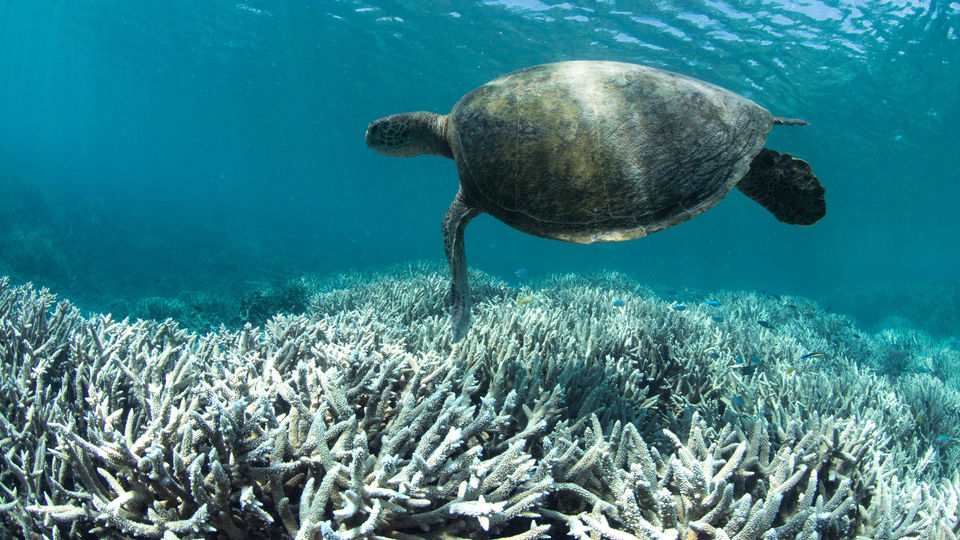Table of Contents
The Marine Park Authority has confirmed that the fifth mass coral bleaching has hit Australia’s Great Barrier Reef (GBR).
Increasing global temperature causes heat-stress coral reefs to expel algae, which turns the reefs white, known as coral bleaching.
Previously, two mass bleaching events were recorded until 2016. This time, the fifth bleaching has happened in the Great Barrier Reef in only eight years. The alarming increase in the frequency of mass bleaching is worrisome.
The authorities and scientists from the Australian Institute of Marine Science have conducted aerial surveys for around two-thirds of coral reefs. Further water surveys are ongoing to understand the effect of the mass bleaching.
The world’s largest coral reef is a UNESCO World Heritage site in Queensland, Australia. It is around 2,300km long, comprising over 2,900 coral reefs.
What exactly is Coral Bleaching?
When coral reefs experience stress conditions in temperature, light, or nutrients, they expel algae living in their tissues, which turns them white. Such a phenomenon is known as coral bleaching.
A typical healthy coral reef contains the coral and the symbiotic algae zooxanthellae living on them. They both depend on each other for nutrients to survive. Living conditions become stressed under changing temperatures, which causes the coral tissues to expel the algae. It turns the coral reefs white (pale), making them more prone to diseases.
However, the reef bleaches are still not dead; they can be subjected to death more if the stress conditions persist. Scientists suggest we can recover the reefs if the ocean temperature stabilizes.
One of the significant causes of such bleaching is climate change. Other causes include pollution, overexposure to sunlight, and exposure to air during low tides.
Why is the Great Barrier Reef in Australia important?
The Great Barrier Reef is the world’s most extensive reef system, spread across 2,300 kilometers. It comprises over 2,900 individual coral reefs.
It is home to 1,500 fish species, 411 different types of corals, and endangered animals like the giant green turtles. It is a significant attraction for Australian tourists and contributes heavily to its economy.
Being one of the most biodiverse structures made by living organisms, it is crucial to the scientific community.
A red alert for the world
The Great Barrier Reef has undergone severe bleaching in 1998, 2002, 2016, 2017, 2022, 2022, and 2024.
Scientists have shown that rising global temperature has elevated the sea temperature, causing reef bleaching.
The reef has rebuilt itself for decades from the severity of other mass bleaches and cyclones. Scientists say, this time, it is the worst coral bleaching in over 20 years.
Due to the large size of the Great Barrier Reef Australia, the heat stress across it is not uniform. There are differences in the number of complete white reefs.
The Australian Marine Conservation Society (AMCS) urged the Australian government to cut greenhouse gas emissions(GHG) and not approve any fossil fuel projects in the future.
The Australian government has promised one billion Australian dollars for over ten years to support the new climate adaptation technology, invest in water quality programs, protect the coral reef species, and cut GHG emissions by 2050.
The government is under pressure to tackle this problem and has been called out by global climate experts. They have urged the government to reduce GHG emissions to maintain the
Increase global temperature within 1.5℃, a threshold for the reefs to survive.
According to the National Oceanic and Atmospheric Administration (NOAA) report, the world hit the highest global temperature last year since 1850. The increasing temperature has triggered mass bleaching in other parts of the world.
In 2005, the reefs in the Caribbean, U.S., saw a severe mass bleaching event.

1 Comment
Pingback: Deepsea Mining: Greenpeace Can Be Expelled from UN Talks